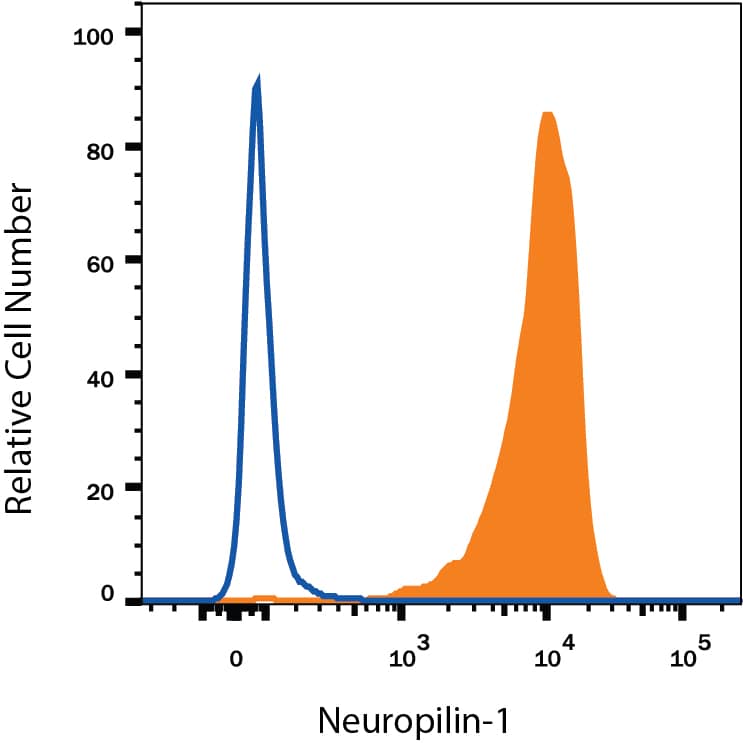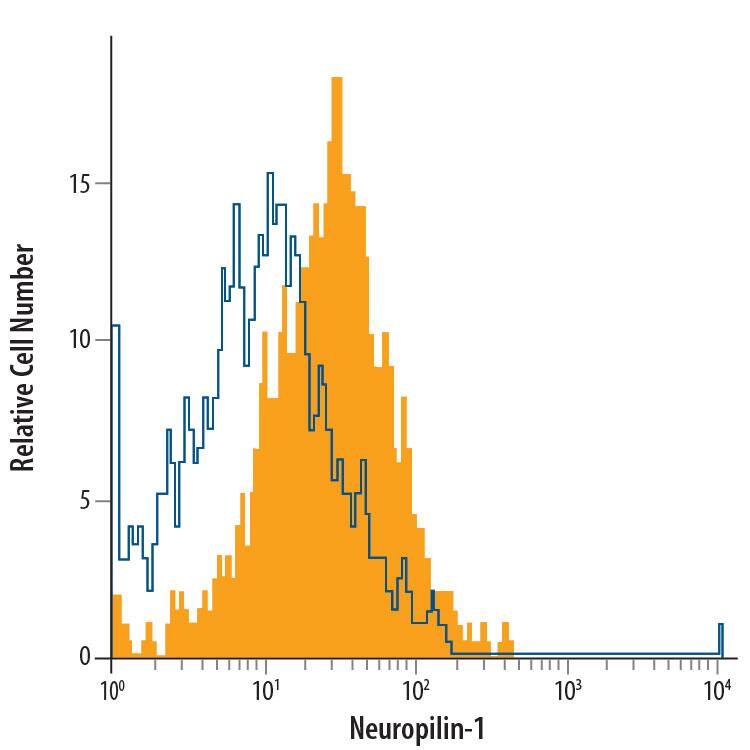Neuropilin-1: Antibodies
Bio-Techne offers high quality Neuropilin-1 antibodies from our Novus Biologicals and R&D Systems brands. Our Neuropilin-1 antibodies have been cited in 194 publications with 6 5-star customer reviews. Browse our catalog for anti-Neuropilin-1 monoclonal, polyclonal, and recombinant monoclonal antibodies. These antibodies are reactive in target species including Mouse, Human, Rat, Canine, Chicken, and more. Our Neuropilin-1 antibodies have been validated for use in several research applications: Flow Cytometry, CyTOF-ready, Immunohistochemistry, Block/Neutralize, ELISA, and more. Choose the anti-Neuropilin-1 antibody best suited for your research needs by viewing the technical details, images, citations, reviews, and more. Each Neuropilin-1 antibody is fully covered by Bio-Techne’s 100% guarantee.
Bio-Techne offers a comprehensive range of other Neuropilin-1-related products including Neuropilin-1 Proteins and Enzymes, Neuropilin-1 Luminex Assays, Neuropilin-1 ELISA Kits, and more.
325 results for "Neuropilin-1 Primary Antibodies" in Products
325 results for "Neuropilin-1 Primary Antibodies" in Products
Neuropilin-1: Antibodies
Bio-Techne offers high quality Neuropilin-1 antibodies from our Novus Biologicals and R&D Systems brands. Our Neuropilin-1 antibodies have been cited in 194 publications with 6 5-star customer reviews. Browse our catalog for anti-Neuropilin-1 monoclonal, polyclonal, and recombinant monoclonal antibodies. These antibodies are reactive in target species including Mouse, Human, Rat, Canine, Chicken, and more. Our Neuropilin-1 antibodies have been validated for use in several research applications: Flow Cytometry, CyTOF-ready, Immunohistochemistry, Block/Neutralize, ELISA, and more. Choose the anti-Neuropilin-1 antibody best suited for your research needs by viewing the technical details, images, citations, reviews, and more. Each Neuropilin-1 antibody is fully covered by Bio-Techne’s 100% guarantee.
Bio-Techne offers a comprehensive range of other Neuropilin-1-related products including Neuropilin-1 Proteins and Enzymes, Neuropilin-1 Luminex Assays, Neuropilin-1 ELISA Kits, and more.
| Reactivity: | Mouse, Rat |
| Details: | Goat IgG Polyclonal |
| Applications: | WB, Flow, IHC, Block, CyTOF-ready |
| Reactivity: | Human |
| Details: | Sheep IgG Polyclonal |
| Applications: | WB, Flow, IHC, Block, CyTOF-ready, +1 More |
| Reactivity: | Human |
| Details: | Mouse IgG2a Monoclonal Clone #446921 |
| Applications: | Flow, CyTOF-ready |
| Reactivity: | Mouse, Rat |
| Details: | Goat IgG Polyclonal |
| Applications: | Flow |
| Reactivity: | Rat |
| Details: | Mouse IgG1 Monoclonal Clone #130604 |
| Applications: | WB, IHC |
| Reactivity: | Rat |
| Details: | Goat IgG Polyclonal |
| Applications: | WB |
| Reactivity: | Mouse |
| Details: | Rat IgG2a Monoclonal Clone #761704 |
| Applications: | Flow, CyTOF-ready, Neut |
| Reactivity: | Human |
| Details: | Mouse IgG2a Monoclonal Clone #446921 |
| Applications: | Flow |
| Reactivity: | Human, Mouse, Rat |
| Details: | Rabbit IgG Polyclonal |
| Applications: | IHC |
| Reactivity: | Mouse |
| Details: | Rat IgG2a Monoclonal Clone #761705 |
| Applications: | Flow |
Recombinant Monoclonal Antibody.
| Reactivity: | Human, Mouse, Rat |
| Details: | Rabbit IgG Monoclonal Clone #ST05-30 |
| Applications: | IHC, WB, ICC/IF, Flow, IP |
| Reactivity: | Mouse, Rat |
| Details: | Goat IgG Polyclonal |
| Applications: | Flow |
| Reactivity: | Human |
| Details: | Mouse IgG2a Monoclonal Clone #446921 |
| Applications: | Flow |
| Reactivity: | Human |
| Details: | Mouse IgG1 Monoclonal Clone #446915 |
| Applications: | WB |
| Reactivity: | Mouse |
| Details: | Rat IgG2a Monoclonal Clone #761705 |
| Applications: | Flow, CyTOF-ready |
| Reactivity: | Mouse |
| Details: | Rat IgG2a Monoclonal Clone #761705 |
| Applications: | Flow |
| Reactivity: | Human |
| Details: | Sheep IgG Polyclonal |
| Applications: | WB, Flow, IHC, Block, CyTOF-ready, +1 More |
| Reactivity: | Human |
| Details: | Sheep IgG Polyclonal |
| Applications: | WB, Flow, IHC, Block, CyTOF-ready, +1 More |
| Reactivity: | Mouse, Rat |
| Details: | Goat IgG Polyclonal |
| Applications: | Flow |
| Reactivity: | Mouse, Rat |
| Details: | Goat IgG Polyclonal |
| Applications: | Flow |
| Reactivity: | Mouse, Rat |
| Details: | Goat IgG Polyclonal |
| Applications: | WB, Flow, IHC, Block, CyTOF-ready |
| Reactivity: | Mouse |
| Details: | Rat IgG2a Monoclonal Clone #761704 |
| Applications: | Flow |
| Reactivity: | Mouse |
| Details: | Rat IgG2a Monoclonal Clone #761705 |
| Applications: | Flow |
| Reactivity: | Mouse |
| Details: | Rat IgG2a Monoclonal Clone #761705 |
| Applications: | Flow |
| Reactivity: | Human |
| Details: | Mouse IgG2a Monoclonal Clone #446921 |
| Applications: | Flow |

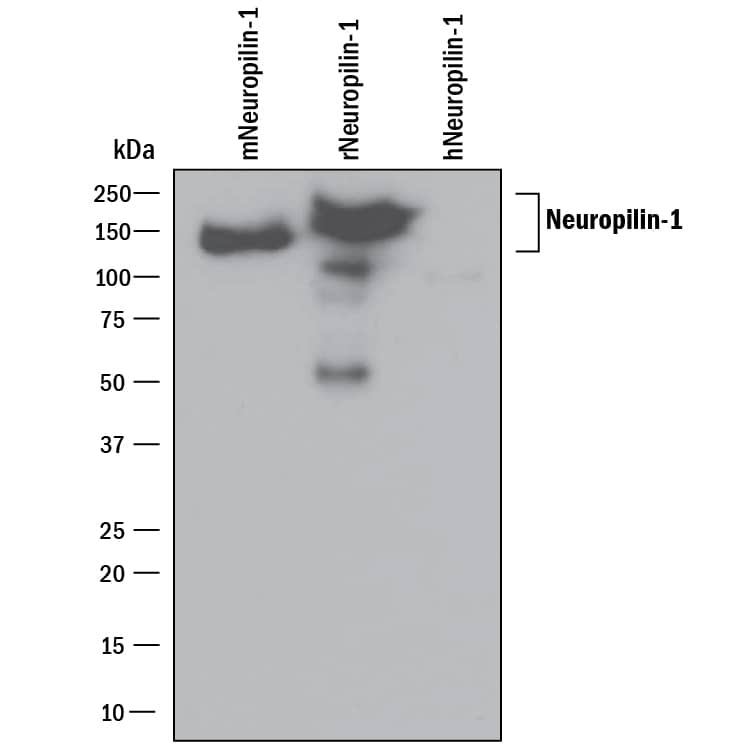




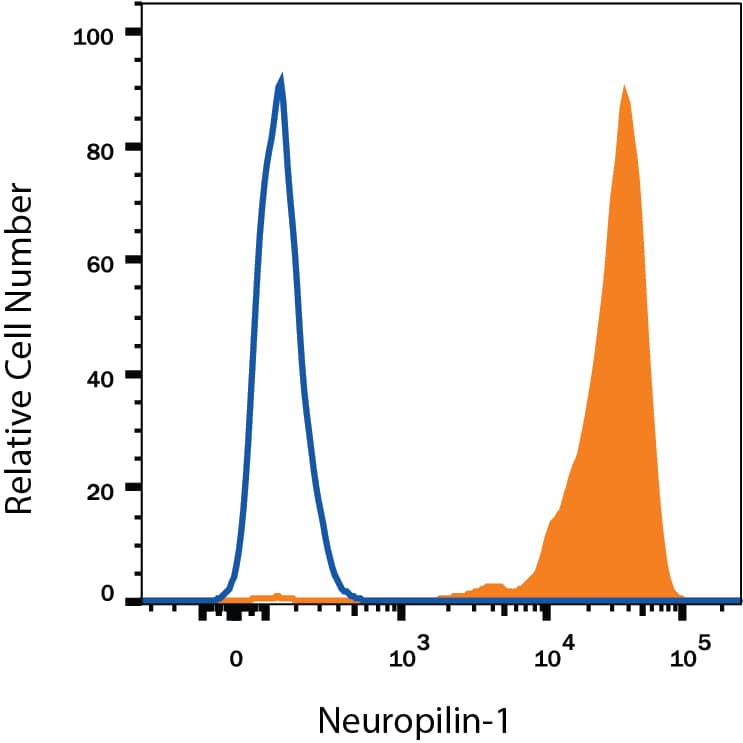

![Immunohistochemistry-Paraffin: Neuropilin-1 Antibody [NBP2-24617] Immunohistochemistry-Paraffin: Neuropilin-1 Antibody [NBP2-24617]](https://resources.bio-techne.com/images/products/Neuropilin-1-Antibody-Immunohistochemistry-Paraffin-NBP2-24617-img0001.jpg)
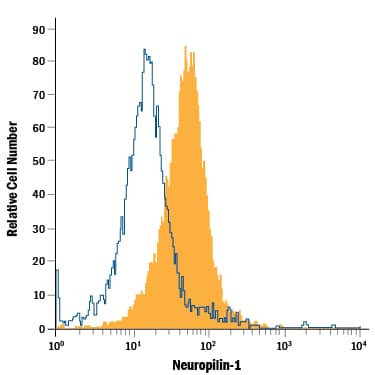
![Western Blot: Neuropilin-1 Antibody (ST05-30) [NBP2-67539] Western Blot: Neuropilin-1 Antibody (ST05-30) [NBP2-67539]](https://resources.bio-techne.com/images/products/Neuropilin-1-Antibody-ST05-30-Western-Blot-NBP2-67539-img0009.jpg)

